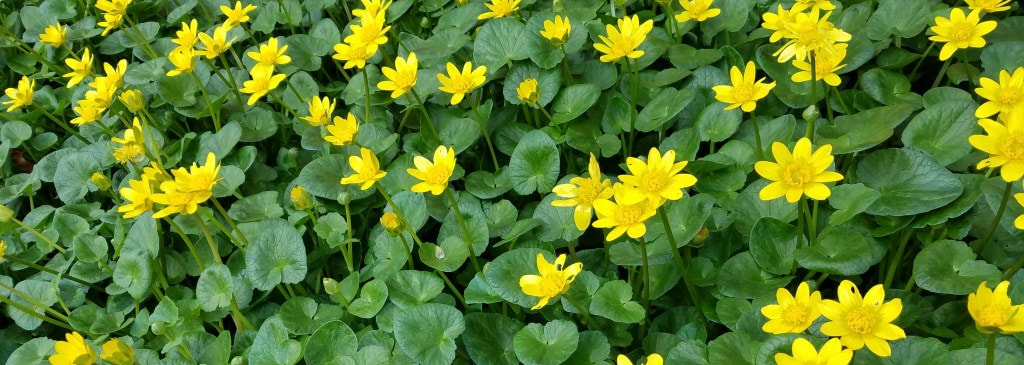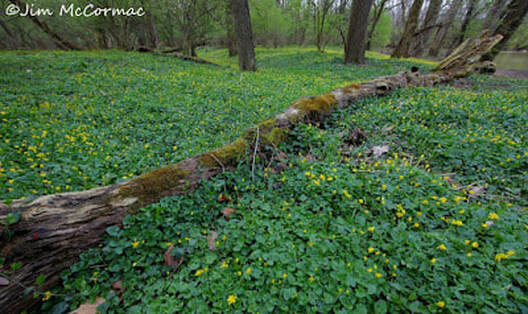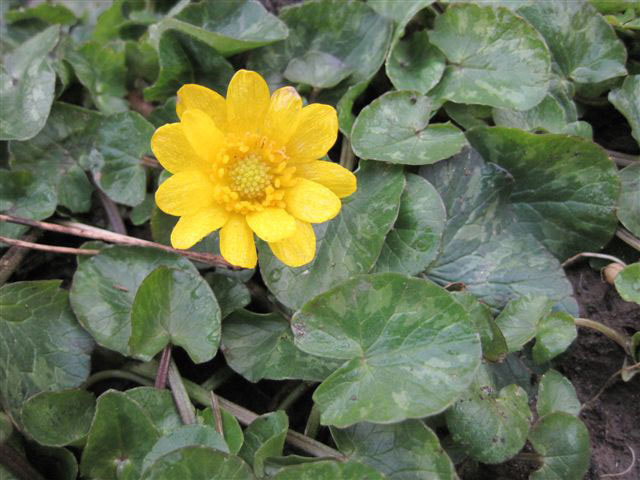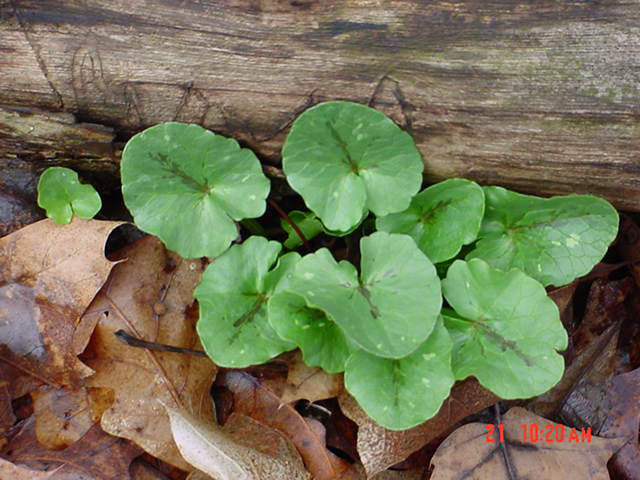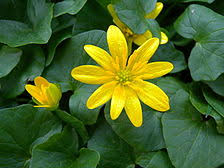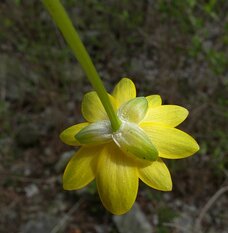|
Lesser Celandine
(Ficaria verna) What Is It? Lesser celandine is an invasive ground cover in riparian areas with bright yellow flowers in April. Why Is It a Problem? It completely dominates riparian areas, displacing all other plants. Where Does It Grow? In Monroe County it is known to be along several riparian areas, including Jackson Creek, Clear Creek, and their tributaries. |
Think you have found lesser celandine? Check for these three characters:
Control of this species is very difficult. To control it without chemicals every plant must be dug out and removed. Because there are small bulbils among the roots, the surrounding dirt should be removed or sieved to make sure no bulbils are left. For chemical control, 4.5% glyphosate (which is 6 oz. per gallon of water) with surfactant is effective. Treatment should occur on a non-windy day above 50 degrees before the plant starts flowering (early March to early April is best).
